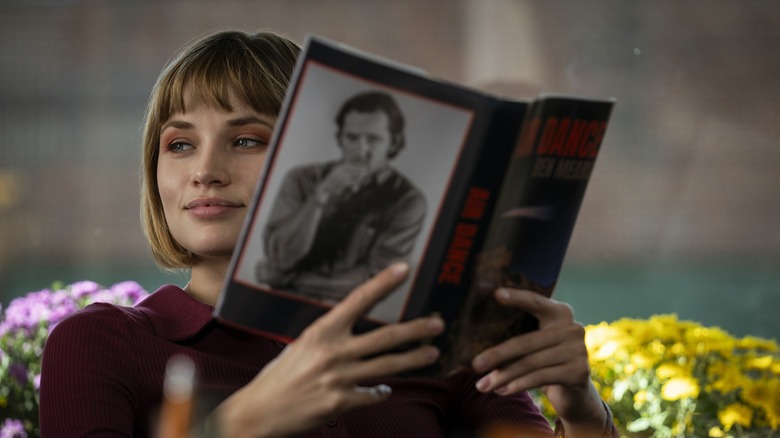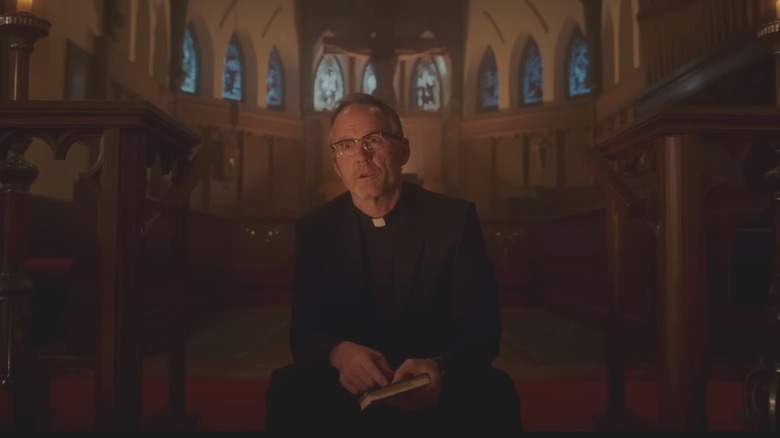Why The Salem's Lot Opening Scene Cut A Major Moment From Stephen King's Book
The latest take on "Salem's Lot," directed by Gary Dauberman and dropped on Max on October 3, is one of the many Stephen King adaptations that struggles to fit the massive story into a two-hour film.
"My first cut was about three hours," Dauberman explained in a recent Den of Geek interview. "There's a lot left out. My first draft of the script is 180-odd pages or something because you're trying to include everything. And a lot of it has to do with a lot of the secondary characters and stuff ... So it was sad to see that stuff go, but it's like a necessary evil."
One of the hardest scenes to cut for Dauberman was from the backstory of main character Ben Mears (Lewis Pullman): he sneaks into the spooky old place known as the Marsten House as a kid and sees what seems to be a ghost. It was a formative moment for the character, one that was originally supposed to be the film's opening scene, but Dauberman made the difficult choice to cut it.
"It seemed to muddy the waters for audiences; the ghost story within the vampire story," Dauberman explained. "To me it's so important because it's why Ben believes the vampire stuff, but we're not telling that story, so that was the hardest thing to cut because I love the sequence."
A common issue for Stephen King adaptations
The new "Salem's Lot" was a bit of a disappointment, described by /Film's chief film critic Chris Evangelista as an awfully rushed affair. It's unfortunately easy to tell that this was a three-hour film cut down into a two-hour one, because the cast of characters feels thinly drawn and big decisions are made without feeling like they were earned. It's a common problem that plagues Stephen King movie adaptations; whereas King loves himself a book that goes on for 500+ pages, most horror movies are supposed to stay at or below a two-hour runtime.
Although "Salem's Lot" is hardly King's longest novel, it's still difficult to adapt due to its massive cast of characters. The book dedicates a lot of time to capturing the feel of an entire town being slowly thrown into chaos, featuring dozens of minor characters going through separate storylines before and after the vampires start ruining everything. It's the sort of storytelling choice a book can do just fine, but a movie can't. At least, not without seriously stretching out the run time.
It seems like Dauberman's big mistake, as he put it, was "trying to include everything." The best approach for an adaptation like this is to do what Stanley Kubrick did with "The Shining," and mercilessly cut the book's plot down to its bare essentials. Kubrick's film didn't try to accurately portray Jack Torrance's slow and complicated decline into insanity; instead it established him as someone already on the cusp of insanity from day one.
Stephen King himself didn't love this, but the gambit paid off: "The Shining" movie is so great because it has all the time it needs to explore its simple, focused premise, rather than operating in a mad rush to include every single cool scene from the book. Would it have been fun to see the book scenes with the hedge animals, the bees, all the big events in Jack's backstory, and so on? Sure, but it was a necessary sacrifice to keep the movie running smoothly. Hardcore fans of the source material might disagree, but when it comes to making a good film, faithfulness to the book is overrated.

